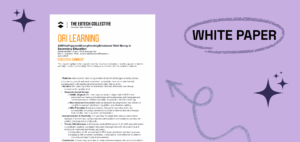Academic achievement alone isn’t sufficient for school students to thrive. Developing strong social and emotional skills is equally important for their overall well-being and future success.
Social Emotional Learning (SEL) empowers students to understand and manage their emotions, build positive relationships, make responsible decisions, and achieve their personal and collective goals. An effective way to foster these essential skills with bite-sized snippets of SEL practice is by using Social Emotional Learning worksheets.
This guide will explore the importance of SEL worksheets, provide practical guidance on how to use them in an educational setting, and share strategies that you can use to maximize their impact. Your ultimate goal is to create supportive learning environments that nurture students’ holistic development, and this is more than achievable with the strategic use of free Social Emotional Learning worksheets.
The Importance of Social Emotional Learning Activities Worksheets
Social Emotional Learning (SEL) is more than just a buzzword—its ability to positively impact students’ overall success is backed by extensive research.
SEL worksheets offer a structured approach to developing essential life skills that complement traditional academic learning. They engage students in thoughtful activities and reflections, helping them to understand and manage their emotions, build empathy, interact effectively with others, and develop healthy coping mechanisms.
The benefits of SEL worksheets extend beyond the classroom. Students who possess strong social and emotional skills are more likely to:
- Achieve academic success. Research has shown a direct correlation between SEL and improved academic performance.
- Build positive relationships. Effective communication and empathy are key to fostering strong friendships and collaborations, and SEL interventions have been found to “significantly improve” peer relationships (see above link to meta-analysis).
- Make responsible decisions. When students understand emotions and consequences, they can make informed choices.
- Manage stress and adversity. SEL skills equip students with tools to cope with challenges and build resilience, and its implementation has been linked to a reduction in emotional distress, unease, pressure, or social withdrawal.
- Contribute positively to their community. Empathy and social awareness are essential for active citizenship. SEL has been found to improve both cognitive and emotional empathy in children and adolescents.
Common Types of Social and Emotional Learning Worksheets
SEL worksheets come in a variety of formats. Each worksheet is designed to target specific social and emotional skills, so they complement one another and are effective, not repetitive, when used simultaneously.
Here are some common types of Social and Emotional Learning worksheets:
Self-Awareness Worksheets
These worksheets help students understand their emotions, strengths, and values. They might include activities such as:
- Emotion identification and labeling
- Personal strengths and weaknesses assessments
- Goal setting and planning
- Mindfulness and relaxation techniques
Self-Management Worksheets
These focus on helping students regulate their emotions and behaviors. Activities might include:
- Anger management strategies
- Problem-solving exercises
- Impulse control activities
- Time management skills
Social Awareness Worksheets
Social awareness worksheets help students understand the perspectives of others and develop empathy. Activities might include:
- Perspective-taking exercises
- Empathy building activities
- Conflict resolution strategies
- Diversity and inclusion activities
Relationship Skills Worksheets
These help students build and maintain positive relationships with their peers. Activities might include:
- Communication skills practice
- Teamwork and collaboration exercises
- Assertiveness training
- Active listening activities
Responsible Decision-Making Worksheets
Responsible decision-making worksheets help students make thoughtful choices based on ethical considerations. Activities might include:
- Decision-making models
- Consequences and outcomes analysis
- Ethical dilemmas and discussions
- Goal setting and planning
How to Successfully Integrate Social Emotional Learning Worksheets Into Your Curriculum (with Evidence-Based Strategies)
To effectively integrate SEL worksheets into your curriculum, you’ll need to do some forward planning.
The good news is that high-quality Social and Emotional Learning worksheets, like those produced by Ori Learning, are ready to teach, with classroom-ready activities, accessibility, and instructional flexibility built in. But if you’ve never used Social and Emotional worksheets before, you will still need to determine how to blend these snippets of SEL teaching with your existing classroom schedule.
Here are some evidence-based strategies to help you maximize the impact of SEL worksheets in a school environment:
Align Worksheets with Curriculum Goals
Research indicates that integrating SEL, even in bite-sized formats, into core academic subjects enhances students’ learning and motivation. For example, there’s evidence that SEL implementation has a positive impact on students’ reading, writing, and math outcomes. One study found that SEL increased students’ reading achievement, and another reported “positive outcomes” contributing to academic proficiency in reading, math, and writing in children who participated in an SEL program versus those who didn’t.
When you’re looking at ways to integrate SEL into your lesson plans, ensure that Social Emotional Learning worksheets complement your existing curriculum. For instance, use empathy-focused worksheets during a literature unit or problem-solving worksheets in math class. This integration reinforces the relevance of SEL skills in different academic areas.
Create a Supportive Classroom Environment
A positive classroom environment is key to the success of SEL initiatives. Research shows that students are more likely to engage in learning and exhibit positive behavior in classrooms where they feel safe, respected, and supported. Classrooms with a strong sense of community lead to increased student engagement and better social outcomes.
To create a supportive environment, establish clear expectations, routines, and rules that encourage students to respect and empathize with one another. Integrating Social Emotional Learning worksheets focused on empathy and communication can reinforce these values during daily activities.
Encourage students to contribute to the creation of classroom norms and involve them in discussions about how to maintain a positive atmosphere. This helps them internalize the importance of a supportive environment for their social and emotional development.
Differentiate Instruction
Differentiating your instruction methods will ensure you meet the diverse needs of students in your classroom—something that’s particularly important when implementing SEL, which, despite how it’s often misinterpreted, is not universal and varies in its implementation from one school to the next.
Research suggests that differentiated instruction enhances students’ social and emotional development by addressing their individual learning styles and abilities. You can differentiate your SEL instruction by offering a variety of worksheets and activities that cater to different learning preferences.
Also consider the varying levels of SEL skills among your students to ensure everyone can benefit from your instruction regardless of their starting point. You can provide simpler Social and Emotional Learning activities worksheets for students who need extra guidance and more advanced problem-solving scenarios for those ready to tackle deeper issues.
Foster Student Ownership
Effective SEL implementation isn’t all about your own instruction—it should also include empowering your students to take ownership of their learning. When students feel a sense of control and responsibility over their learning, their engagement and motivation significantly increase. Research shows that student-driven learning activities, such as following personalized learning plans, can boost their intrinsic motivation and effectively meet their learning needs and interests.
You can encourage ownership in an educational setting by involving students in the selection and creation of Social Emotional Learning worksheets and activities. For example, you could allow students to choose from a range of SEL topics that interest them or encourage them to create their own scenarios for role-playing exercises. You can also ask questions to reinforce SEL throughout the day. Giving students input in what they learn should help to boost engagement and make their learning experience more relevant.
Provide Opportunities for Practice
The best way for your students to develop their social and emotional skills is through regular practice, much like any other academic subject.
Consistent practice of SEL activities leads to more meaningful skill development and better long-term outcomes. For instance, this 2020 elementary school study found that students who were exposed to the same SEL program across multiple grade levels showed “further gains in several social skill domain areas and academic engagement” compared to students who were exposed to the program in second grade only.
Incorporate Social Emotional Learning worksheets and activities into your routine so your students have ample opportunities to practice these skills. You might start each day with a reflection or discussion prompt from an SEL worksheet, so students can practice their empathy, problem-solving, or self-regulation regularly.
Collaborate with Colleagues
You’ll have an easier time successfully implementing SEL worksheets into the curriculum if there’s effective collaboration among teachers in your school. Research highlights that collaboration in educational settings improves the school culture and climate by “creating a safe space where all voices are heard and equally”, ensuring more cohesive student experiences and greater improvements in social and emotional outcomes.
Share ideas and resources with your colleagues to create a unified approach to SEL. For instance, you might work with another teacher to align Social and Emotional Learning worksheets with themes in both your classrooms, so your students experience a consistent focus on social and emotional learning throughout their day.
Seek Feedback
Gathering feedback will help you refine and improve your SEL implementation. When you incorporate feedback from students, parents, and colleagues, you can improve your educational practices and, therefore, your student outcomes. According to research, when teachers actively seek and respond to feedback, they can make informed adjustments to enhance teaching quality and student learning.
Regularly ask your students to share their experiences with SEL worksheets and activities, and invite parents to provide their observations as well. Additionally, collaborate with colleagues to discuss what’s working and what might need improvement. Use this feedback to fine-tune your approach, ensuring that the SEL instruction continues to meet the needs of all students effectively.
Incorporating Social Emotional Learning Worksheets Into Educational Settings: Next Steps
Integrating free Social Emotional Learning worksheets into your curriculum will greatly support your mission to create a balanced educational experience. Align these worksheets with your curriculum goals, and prioritize establishing a supportive classroom environment where SEL concepts are practiced daily, to enhance student engagement and learning outcomes.
Free printable Social Emotional Learning worksheets make a great addition to any SEL program, lesson, or activity. You can weave them into your curriculum, using them to supplement your lessons and to practice pro-social skills and facilitate conversations.
More on empathy games:More on Social Emotional Learning Worksheets
The five social-emotional learning (SEL) skills are social awareness, relationship skills, self-awareness, self-management, and responsible decision-making. Self-awareness involves understanding your own emotions and how they affect your behavior. Self-management is about controlling your emotions and managing stress. Social awareness means recognizing and understanding the feelings of others. Relationship skills involve communicating effectively and working well with others. Responsible decision-making is about making choices that are ethical and beneficial for yourself and others.
SEL worksheets are educational tools designed to help students develop their social and emotional skills. These worksheets include various activities and prompts that focus on topics like managing emotions, understanding others, and improving communication and relationships. They can be used in the classroom or at home to support the practice and growth of essential life skills related to social and emotional development.
The four pillars of social-emotional learning are self-awareness, self-management, social awareness, and relationship skills.




